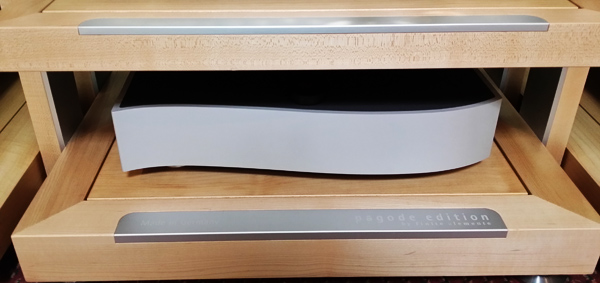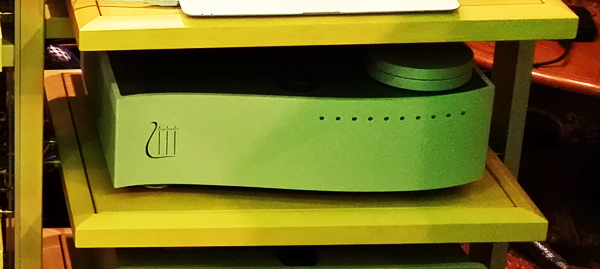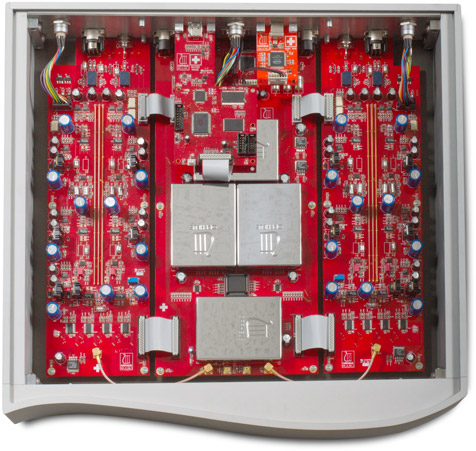Orpheus Heritage D/A Converter
호응도가 좋으면 맨 마지막에는 실텍 드블 크라운 스피커 케이블도 배를 따고 사진을 올리겠습니다.^^
Orpheus Heritage D/A Converter입니다. 전원부 분리형으로 팔방미인 입니다만, 한가지 아쉬운 점은 자기 짝꿍인
트랜스포트가 SACD를 물고있는지 XRCD, CD를 물고있는지 알기는 하는데 스스로 변환을 하지 못하는군요
사람이 버튼을 눌려서 변환시켜 주어야 합니다. 요즘 많이들 활용하고있는 PI-FI는 발군의 실력을 발휘합니다.
이 영교 사장님 이것도 같이 참조만 하십시요!^^
Orpheus Heritage D/A Converter
The new Heritage D/A Converter have been updated with brand new features as a DSD (Direct Stream Digital) input.
Moreover, the new DAC is able to clock with an external digital clock source.
If no external clock is used, the Time Lock module will generate his own master clock used
at all the different stages of the converter in order to minimize the jitter.
It also keeps the high levels of audio technology by using several up sampling modules
and the unique proprietary D/A converter drive modules followed by four D/A converter IC's per channel.
The scrambling technique is used to lower the noise generated by the D/A conversion phase.
A firewire and a USB 192KHz input have also been integrated in order to connect the Heritage DAC
with a computer to use it as an impressive external audio converter.
In order to keep the highest rate of performance, we decided to keep a dual mono architecture.
That means that each channel has its own power supply and its own transformer
in order to erase all interaction between channels.
The DSP and the MCU boards have also been upgraded in order to integrate all the new features
and improve even more the most legendary product of Orpheus.




